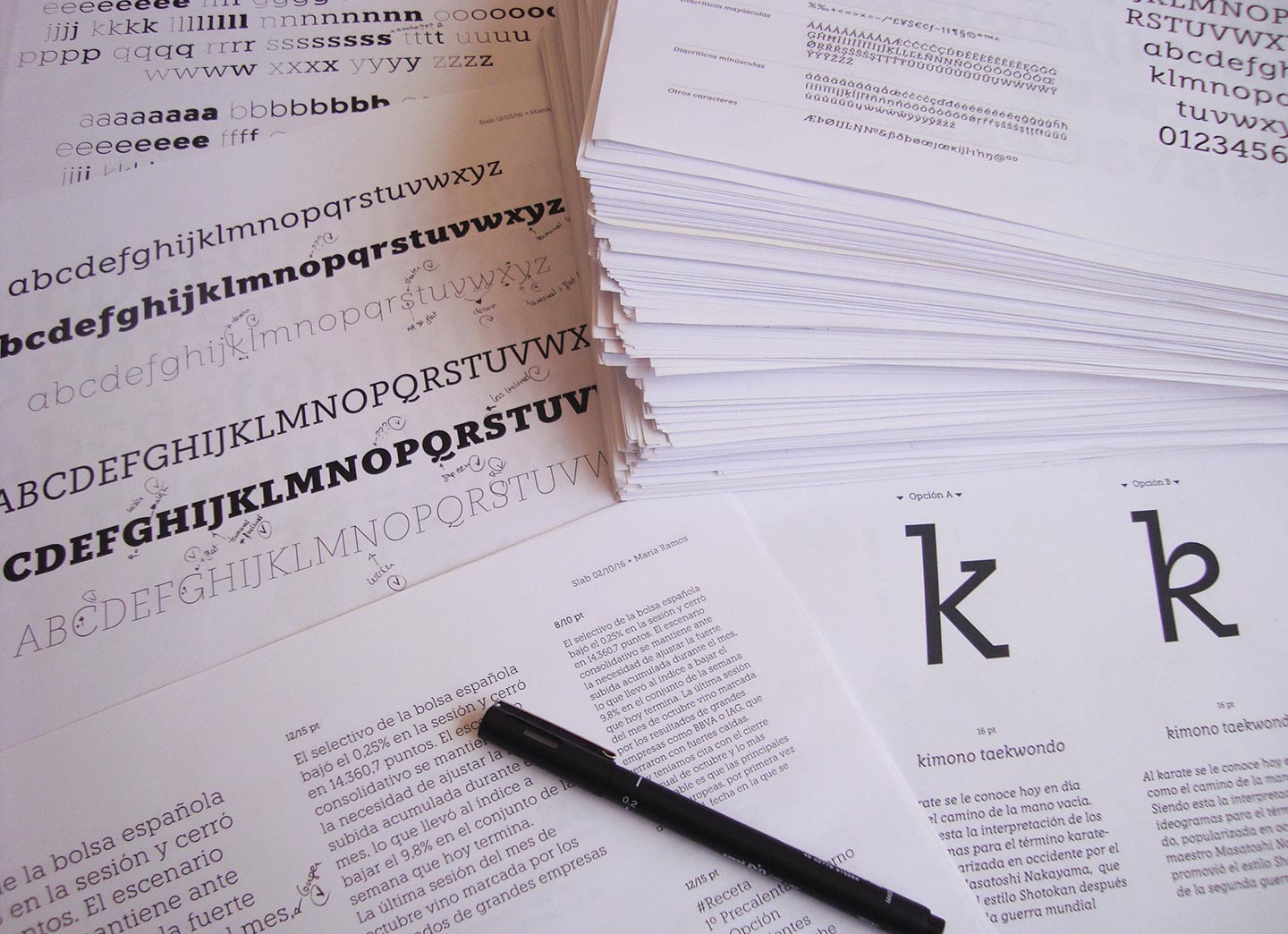It seems slab serif typefaces are taking over the market. In 1990, PMN Caecilia proved that it was possible create a slab with a more humanistic approach, a style that could work, not only as a display typeface, but for running text as well. In the last decade the diversity in slab designs has grown. The constructed shapes of the serifs adapt to the pixel grid, and they usually work well on screen. We have many different options for slab text typefaces. Some, like Ernestine, include several scripts, while others, like the recently released Equitan, are a part of large families. The rather squarish appearance of classic Egyptians, coexist today with more rounded lettershapes in new slab designs.
Knile is a newborn within the genre. It is a collaborative project with the Spanish design studio Atipo. The original idea was to create a slab counterpart for the existing typeface family Geomanist. Slab serifs are not just sans with added terminals; they have intrinsic design peculiarities. As far as we wanted the typeface to be functional as a text typeface, many changes were necessary and the design evolved into a typeface family with its own personality.

Printing tests made during the design process
